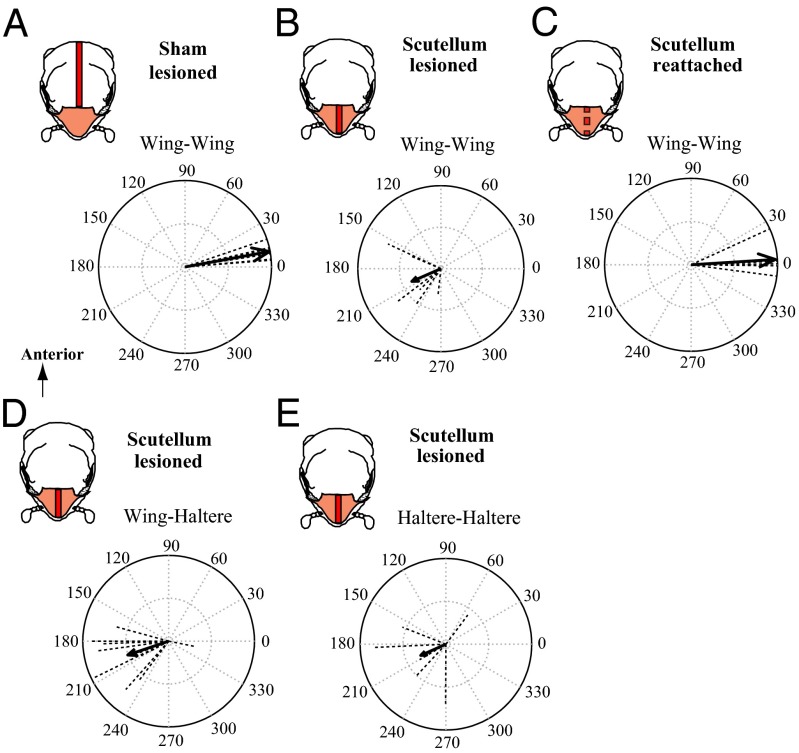Fig. 2.
Wing–wing coordination is mediated by a passive mechanical linkage within the scutellum. Vector strength data for the phase between wing–wing (A–C), wing–ipsilateral haltere (D), and haltere–haltere (E) pairs. (Insets) Treatment type as a dorsal view of thorax with scutum (white) and scutellum (brown), and a line on thorax (red) indicating the surgical lesion. (A) Similar to controls (Fig. 1C), scutum-lesioned flies show well-coordinated wing movements (ϕ = 10.35°, r = 0.9932, n = 6, P < 0.001). (B) Scutellum-lesioned flies have disrupted wing–wing coordination and randomly distributed phase angles (ϕ = 203.63°, r = 0.3822, n = 6, P > 0.01). (C) In flies with reattached scutellum, wing coordination is restored (ϕ = 3.60°, r = 0.9769, n = 6, P < 0.001). (D) In scutellum-lesioned flies, halteres move antiphase to ipsilateral wings (ϕ = 198.79°, r = 0.5033, n = 12, P < 0.001; left and right data pooled) similar to control (Fig. 1E). (E) Haltere–haltere coordination is disrupted in scutellum-lesioned flies (ϕ = 203.89, r = 0.3217, n = 6, P > 0.1).

